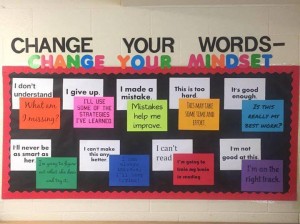Two days of subbing just passed in chiaroscuro, shades of light and dark that have left me exhausted and slightly stunned. I visited heaven and hell, the two of them only 20.2 miles apart, according to MapQuest. Heaven had air-conditioning, hell did not. I can make a variety of comparisons between the two schools in question, but I intend to stop this post with only one: Air-conditioning dwarfs almost any other difference between these two suburban elementary schools. The money that pays for air-conditioning buys an environment conducive to learning. In those districts that cannot find that money — and I have officially worked in two and have subbed in more — late blasts of summer heat can make learning challenging or even impossible. When classroom temperatures hit 90 degrees, teachers and students wilt. I remember a student who laid down on the bathroom floor because the tiles were cool.
If you are spending your day in an air-conditioned school or office, I suggest taking a few moments to appreciate your good luck. Many starting teachers find themselves less fortunate, however, and if you are starting your career in one of America’s multistory, old brick buildings without air-conditioning, I have a few tips:
- Buy fans.
- Label your fans with your name in indelible ink.
- Stock water.
- Work in water breaks for students.
- Cover windows you cannot open, especially during sunny periods. If your blinds are broken, buy sheets at the Goodwill. Try to make them look tasteful for your students’ sake. If all else fails, find large, inexpensive posters to cover windows.
- And most importantly, get one of those fan/squirt gun combinations to use on yourself and willing students. My spray gun saved me during some days in the spring, summer and early fall. Misting students keeps them awake and at least somewhat more alert.
Eduhonesty: As we document, document, document the disparities between our wealthier and less-wealthy school districts, air-conditioning receives almost no attention. Yet air-conditioning has always mattered and now matters more than before. Many schools are pushing the start of the school year back into August and a few are even starting in July, trying to get more weeks in the classroom before the year’s big state test in the spring.
I strongly suspect that rather than a “No Child Left Racing to the Top of Every Student Succeeds” new piece of legislation, America would benefit substantially more from a bill mandating air-conditioning in all schools. I was probably dangerous on the road when I left that second-floor, eighty-some degree classroom yesterday. I honestly felt shaky as I exited the building. My students were squirrelly, sweaty and whiny by day’s end, their classwork irregular and often subpar. Today I left a group of students who had worked all day, listened and contributed to discussion all day, and who had been cheerful and fun as we moved from English to social studies to math. Their papers were detailed, their questions to the point. The extreme contrast between the two groups reminded me of the potent effect of excessive heat on learning. What a difference fifteen to twenty degrees can make!
P.S. Entirely anecdotally, I’ll observe that I’m sure heat affects district staffing. I once turned down an inner-city opportunity not because of the challenging students in the neighborhood or the problematic commute into a high-crime area, but because the interview happened on a hot, August day. I walked into a beautiful, old, brick-and-stone building without air-conditioning and that interview ended before it started, although I politely went through the motions. But new teachers tend to get the worst room assignments. I knew I would never take a chance on having to teach on the third floor of that lovely old building.






